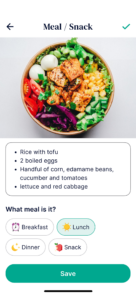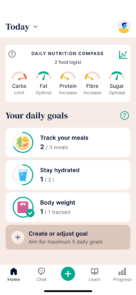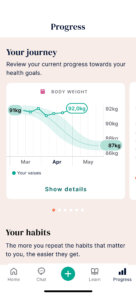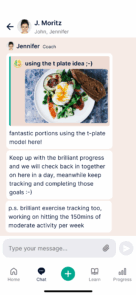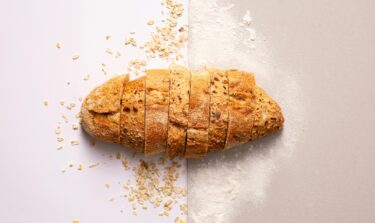
Top 10 healthiest breads for weight loss + healthy bread shopping guide
Not all bread is created equal – some types can support your health goals more than others. So, what is the healthiest bread to eat?
This guide explores the healthiest breads for weight loss, explains which types to enjoy in moderation, and includes a simple shopping guide to help you choose healthy bread with confidence.
If your BMI is over 35, you may be eligible for free NHS weight loss support through Oviva. We’ll help you build healthier habits around food – without cutting out the foods you enjoy.
Key Takeaways
- The healthiest breads are higher in fibre and lower in added sugar.
- Wholegrain or seeded breads are often more nutrient-dense and help you stay fuller for longer.
- Bread can be part of a healthy diet. Look for options with fewer additives and less refined flour, such as wholegrain or rye, over white bread.
What makes bread healthy?
The healthiest breads are usually:
- High in fibre and wholegrains – These support digestion, improve the nutritional quality of your meals, and help you feel fuller for longer between meals.
- Low in added sugar – Choosing breads without added sugar can support balanced blood glucose levels and help you manage your weight more effectively.
- Low glycaemic index (GI) – Healthy breads with a lower GI release energy more slowly, helping to avoid blood sugar spikes and keeping you fuller for longer.
- Nutrient-dense – Breads made with whole ingredients contribute to a more satisfying, balanced diet. Research suggests that nutrient-rich diets may reduce frequent hunger, which can help with weight loss over time.
To support healthy weight loss, it’s helpful to keep an eye on portion sizes—especially when it comes to carbohydrate-rich foods like bread. Aim for breads that contain around 15g of carbohydrates per slice, and try to stick to one or two slices per meal.
Keeping your carbohydrates to 30–40g per meal can support balanced blood glucose levels and help you stay fuller for longer.
Top 10 healthiest breads
1. Sprouted grain bread with legumes (e.g., Ezekiel bread)
- Why it’s healthy: Sprouted wholegrains plus legumes improve nutrient absorption, digestion, and protein.
- Good for: Nutrient density, iron, and blood glucose control.
- Bonus: Often contains all the protein types your body needs, supporting immunity and strength.
- Look for: ‘Sprouted wholegrain’ or ‘flourless’ on the label and a short ingredient list – usually found refrigerated or frozen.
- GI: Low to medium
- How it helps weight loss: Keeps you feeling full, helps limit food cravings, and prevents your blood glucose from rising and dropping quickly, which can lead to overeating.
2. Sprouted wholegrain bread (e.g., sprouted wheat, spelt, or mixed grains)
- Why it’s healthy: Sprouting boosts nutrients of wholegrains and supports easier digestion.
- Good for: Gut health, blood glucose levels, and nutrient absorption.
- Look for: Flourless, no added sugar, and a short ingredient list – usually refrigerated.
- Bonus: Often includes all the proteins your body needs, supporting muscle and tissue repair.
- GI: Low to medium (varies by blend, but much lower than regular whole wheat)
- How it helps with weight loss: High in protein and fibre to support fullness and muscle maintenance.
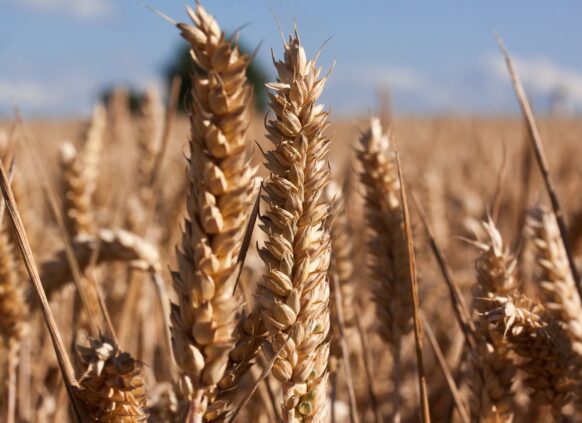
3. 100% wholegrain/wholemeal bread
- Why it’s healthy: Packed with fibre, B vitamins, minerals, and slow-digesting carbohydrates.
- Good for: Energy, digestion, blood glucose levels, and heart health.
- Look for: ’100% wholegrain’ or ’wholemeal flour’ as the first ingredient.
- GI: Medium
- How it helps weight loss: High in fibre to keep you full and limit food cravings. Slow-digesting carbohydrates prevent your blood glucose from rising and dropping quickly.
4. Traditional sourdough bread (especially wholegrain)
- Why it’s healthy: Naturally fermented, making it easier to digest.
- Great for: Sensitive stomachs and blood glucose balance.
- Look for: A long fermentation process and minimal ingredients. Avoid industrial sourdoughs with short fermentation times and food additives.
- GI: Low (especially when made with wholemeal wheat or rye)
- How it helps with weight loss: Supports blood glucose balance and gut health. The fibre helps you stay fuller for longer, making it easier to manage portions.
5. Seeded wholegrain bread
- Why it’s healthy: Combines wholegrains with seeds like flax or chia for protein, fibre, and healthy fats.
- Good for: Helping you feel fuller for longer and heart health.
- Look for: Seeds mixed into the dough (not just sprinkled on top) and bread made with wholegrains or sprouted grains.
- GI: Medium
- How it helps weight loss: Fibre and protein help you feel fuller for longer, so you eat less. Protein also helps prevent muscle mass loss as you lose weight.
6. Rye bread (wholegrain or sprouted)
- Why it’s healthy: Higher in fibre than wheat to help you feel fuller for longer and manage your blood glucose levels.
- Great because: Filling and nutrient-rich.
- Look for: Dark rye (more nutritious than light rye).
- GI: Low
- How it helps weight loss: Prevents rapid rises and drops in blood glucose levels, which can leave you feeling hungry. High fibre content can reduce food cravings.
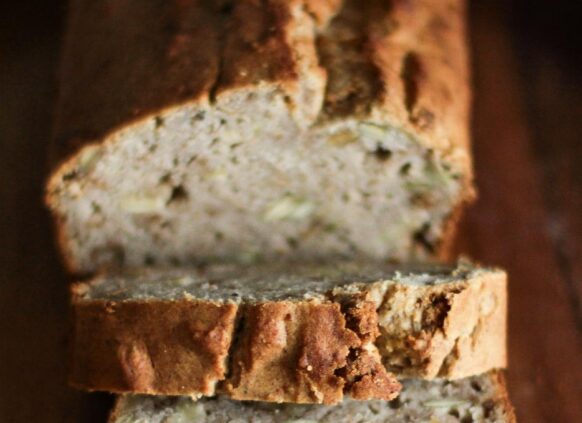
7. Spelt bread (wholegrain or sprouted)
- Why it’s healthy: Ancient grain with a nutty taste and potentially easier digestion.
- Good for: Gentle on digestion, offers a variety of minerals.
- Look for: ‘Whole spelt’ or ‘100% spelt’, ideally sprouted.
- GI: Medium
- How it helps weight loss: Easier digestion can improve nutrient absorption, potentially reducing hunger and food cravings.
8. Buckwheat bread
- Why it’s healthy: Technically a seed, buckwheat is gluten-free and packed with fibre, magnesium, and antioxidants.
- Good for: Gluten-sensitive diets, digestive health.
- Look for: Whole buckwheat listed high in the ingredients.
- GI: Low to medium
- How it helps weight loss: Nutrient-dense and may be lower in calories than some gluten-free breads.
9. Oat bread
- Why it’s healthy: Oats contain beta-glucan, a fibre that helps lower cholesterol.
- Good for: Heart health and feeling fuller for longer.
- Look for: Whole or steel-cut oats listed as a main ingredient—not just “oat flavouring”.
- GI: Medium
- How it helps weight loss: High fibre content can keep you feeling full between meals.
10. Flaxseed bread
- Why it’s healthy: High in omega-3 fatty acids, fibre, and lignans, a phytoestrogen thought to reduce the risk of some health conditions.
- Great for: Inflammation, gut health, and hormone balance.
- Look for: Whole flax seeds with wholegrains or sprouted grains. Avoid ultra processed versions – those with ingredients you wouldn’t find in your kitchen.
- GI: Low to medium
- How it helps weight loss: Fibre and protein help you feel fuller for longer. Protein also helps you reduce muscle mass loss as you lose weight.
Breads to limit or avoid
If you’re focusing on the best diet for weight loss, it can help to limit:
- White bread – Made with refined flour and low in fibre. High GI foods like this can lead to hunger soon after eating, which may increase the risk of overeating.
- Multigrain bread – Unless labelled 100% wholegrain, it’s often made with refined grains despite sounding healthy.
- Bread high in added sugar or salt – Added sugar increases calories, while excess salt may affect blood pressure.
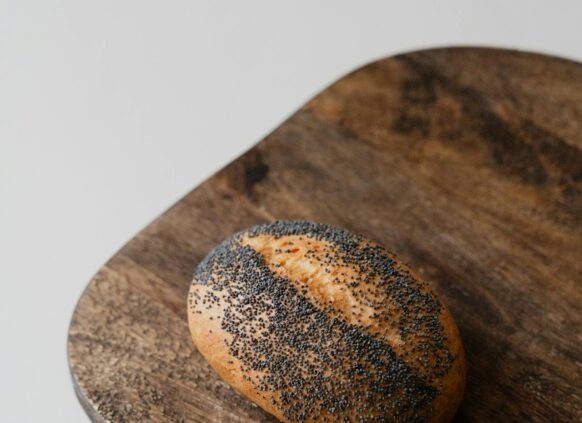
What’s the healthiest bread for weight loss?
There’s no one-size-fits-all answer—the best bread for you depends on factors like cost, availability, personal preference, and any dietary needs or intolerances.
Each of the top 10 healthiest breads can support better health, especially for people managing type 2 diabetes, pre-diabetes, or obesity.
These options offer different benefits—whether that’s extra protein, better digestion, a lower glycaemic index, or a richer nutrient profile.
The key is to choose a high-fibre, low-sugar bread that you enjoy and that fits your lifestyle. This can help you stay satisfied between meals and reduce the urge to overeat.
Oviva can help you make confident, personalised food choices to support your health.

My favourite feature is just snapping a photo of my meal and having all the ingredients recognised. It’s so simple and fits perfectly into my daily routine.
Healthy bread shopping guide
Top ingredients to look for:
Check the first three ingredients on the label—these make up most of the loaf. Look for breads that include one or more of the following:
- Wholemeal flour or whole grain wheat flour
- Sprouted grains (e.g. sprouted wheat, barley, or lentils)
- Rye flour (ideally wholegrain or dark rye)
- Oats, rolled oats, or steel-cut oats
- Flaxseed or chia seeds
Ingredients to avoid:
- White flour
- High fructose corn syrup or glucose syrup
- Vegetable oils (e.g. canola, soybean, sunflower)
- Excess salt – aim for less than 0.5g per slice
Quick tips for checking labels
- Fibre – aim for more than 3g per slice
- Sugar – less than 1.5g per slice
- Protein – 5g or more per two slices is a bonus
- Ingredients list – shorter usually means simpler and healthier
Some final tips on choosing healthy bread
1. Don’t judge by colour
Just because it’s brown doesn’t mean it’s wholegrain. Many breads are coloured with molasses or caramel to appear healthier.
Check the ingredients list—the first ingredient should be whole grain flour, not ‘wheat flour’ or ‘enriched flour’.
2. What you eat with bread matters
Pairing bread with healthy fats, protein, and fibre can help you feel fuller for longer, reduce blood glucose fluctuations, support portion control, and boost nutrient absorption — all of which can support weight loss.
Try:
- Avocado + poached egg on sourdough
- Smoked salmon + cottage cheese on rye
- Nut butter + chia seeds on wholemeal toast
3. GI is important
Low-GI breads, such as sourdough, sprouted, or rye, release energy slowly. This supports weight loss by helping manage blood glucose levels and keeping you fuller for longer.
High-GI breads (e.g., soft white rolls) can rapidly increase blood glucose, then leave you hungry, which can lead to overeating
Look for ‘low GI’ on the label, if listed.
4. Listen to your body
If you feel bloated, foggy, or tired after eating bread, even if it’s healthy, you may be sensitive to some ingredients. Try:
- Ancient grains like spelt or kamut
- Gluten-free options made with quinoa, brown rice, or buckwheat
- Swapping in oats or cooked grains instead of bread some days
Want support making more confident food choices?
Want support making more confident food choices?
If your BMI is over 35, you could get NHS-funded support from Oviva to help you lose weight in a healthy, sustainable way.
Here’s what’s included:
- Personalised advice from registered dietitians and health coaches
- A balanced, flexible approach to eating — no extreme diets or cutting out entire food groups
- Support choosing the healthiest bread and other everyday food swaps
- Wegovy or other prescription weight loss medication, if clinically appropriate
- The Oviva app to track weight, habits, and progress between sessions
That’s why 97% of users would recommend us.

